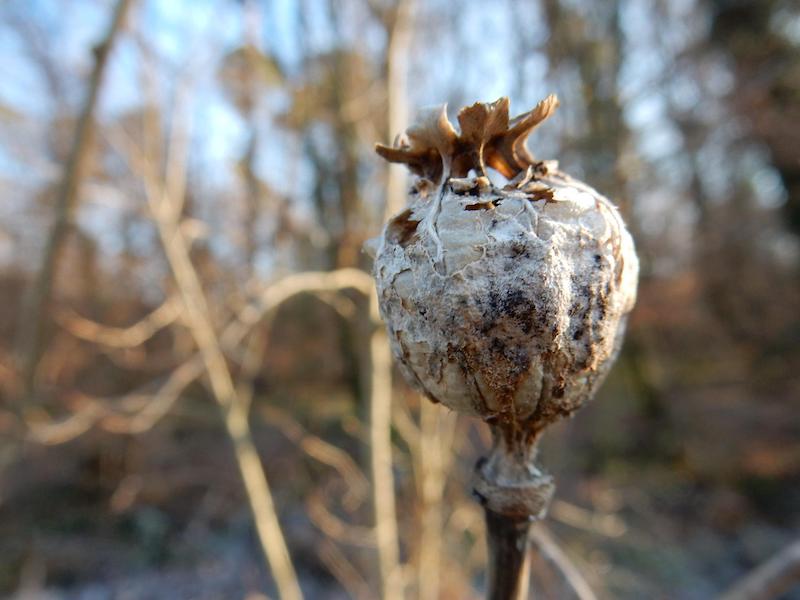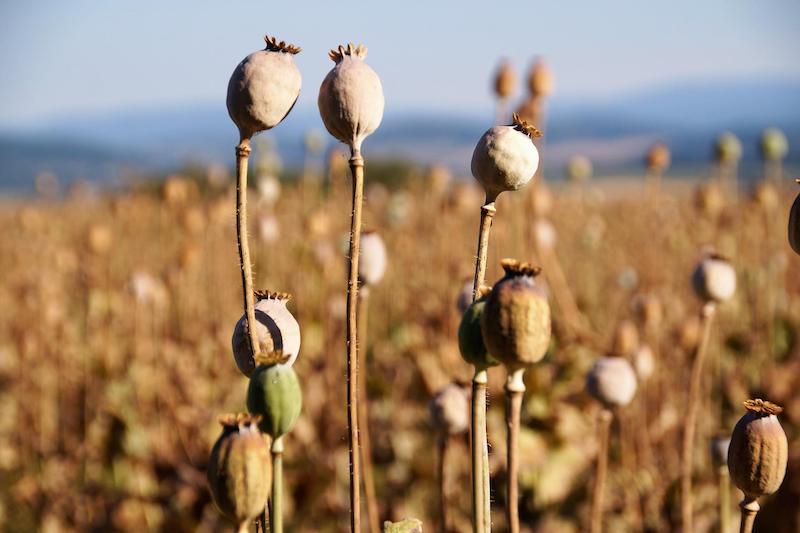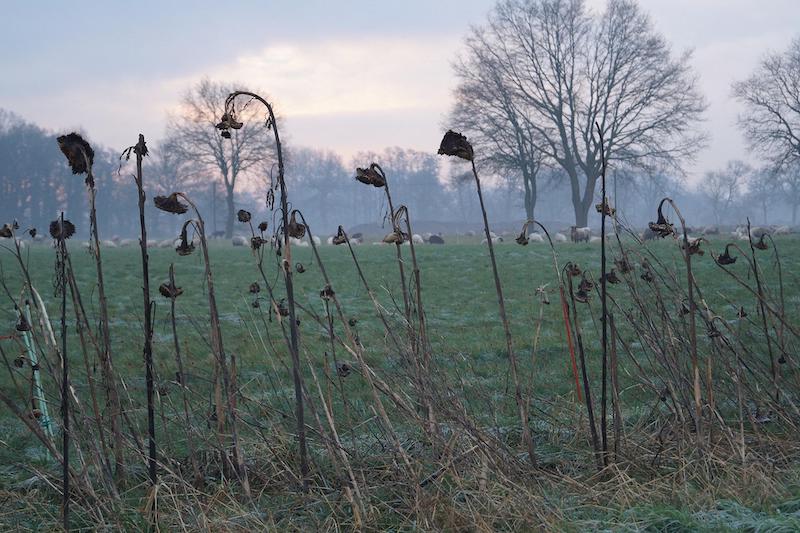Poppies are hardy plants that grow and bloom best in the cooler parts of the spring and summer. Taking care of Poppies throughout the winter is not difficult and does not require many tasks. In most of the growing zones, Poppies will have gone dormant and died back well before fall. The seeds spread in the fall will overwinter and germinate in early spring when the weather begins to warm.

Protecting Poppies in Winter
Proper mulching of perennial Poppies is the best way to ensure that their root systems are insulated and will not receive too much moisture. In late summer, apply a 3-4 inch layer of organic compost, shredded leaves, or arborist chips after cutting back any spent top growth. The mulch will also help to identify the plant’s location so it will not be disturbed during the fall or early spring clean-up of other plants.

Cutting Back Poppies For Winter
Poppies are best left to die back naturally before removing any spent top growth. For the perennial varieties, this will ensure that the root system has received as much energy as it needs before dormancy to regrow vigorously in the spring. Deadheading during the blooming period will help to curtail self-seeding of the annual types. If self-seeding is desired, the final flowers should be left to mature and disperse seed in late summer.

Winter Care for Poppies in Pots
Poppies spending the winter in containers need to have the best drainage possible. Any time that the plants spend standing in water increases risk of root rot and death by the time spring arrives. Move pots away from sources of excess runoff, such as downspouts and under raised decks. Pots can be placed on bricks or ‘pot feet’ to temporarily raise them up and away from standing water on patios or in the garden. Poppy containers should not need to be placed in an unheated greenhouse or garage. The cold helps the roots to stay dormant until the spring returns.
Watering Poppies in Winter
Dormant poppies will not need supplemental watering during winter months.The roots will remain damp enough with the weather in most of the growing zones. Watering does not need to resume until new growth appears early in the spring. Drainage needs to be monitored in growing zones that get large amounts of winter rain. If spots of the garden become waterlogged, Poppies may need to be moved and grown in pots until they can be planted in a better spot.
Growing Poppies Indoors
Poppies do not need to be brought indoors for the winter, no matter which hardiness zone they grow in. The cold helps the perennial types stay dormant as long as possible. The seed-grown annual types need the cold to stratify and prepare for quick germination in the spring.
Steps To Care For Poppies in Winter
Minimal steps need to be taken to prepare all Poppy varieties for the winter. Setting up the Poppies for dormancy during the winter will encourage vigorous growth in the spring.
Step 1 - Cut back any top growth once it has died backed naturally
Step 2 - Mulch with 3-4 inches of organic material to insulate the root system and mark the plants
Step 3 - Monitor drainage through the winter to make sure standing water will not rot root systems
Step 4 - Remove mulch from plant crowns as soon as possible in the spring to allow for healthy new growth
 |
Author Robbin Small - Published 7-26-2022 |
